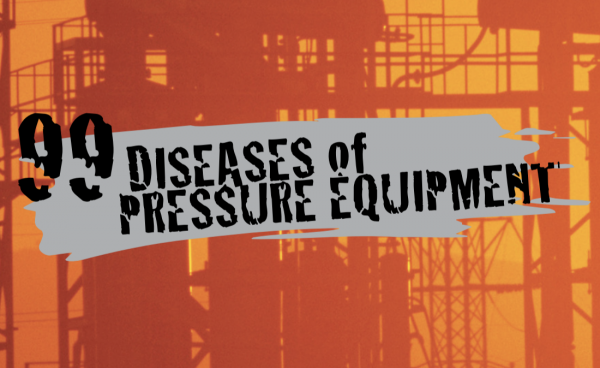CO2 Corrosion is a form of degradation that occurs when dissolved CO2 in condensate forms carbonic acid (H2CO3), which corrodes steels and low alloys to form an iron carbonate scale. CO2 corrosion is most typically found in boiler condensate return systems that are not adequately treated with corrosion inhibitors.
The rate of corrosion in materials affected by CO2 corrosion is dependant on several factors such as the concentration of CO2 in the environment, the operating conditions in which the components work, and the type of materials they are composed of. It’s also important to be aware of the water chemistry that is going on around the equipment; for example, alkaline water that has been de-aerated can build up incredibly high CO2 levels.
Water analysis is the best way to detect condensate problems that may lead to leaks in condensate return systems. Radiography or ultrasonic thickness measurements on the bottom of condensate piping and on the back side of elbows or other areas of higher velocity and/or turbulence may also detect localized thinning typical of condensate corrosion. To better avoid CO2 corrosion, one should adequately treat condensate return systems with corrosion inhibitors and upgrade various affected components to 304 SS.
Related Topics
- Brittle Fracture
- Carburization
- Cavitation
- Cooling Water Corrosion
- Corrosion Fatigue
- Corrosion Under Insulation (CUI)
- Cracking
- Decarburization
- Embrittlement
- Erosion Corrosion
- Fatigue (Material)
- Flue Gas Dew Point Corrosion
- Graphitization
- Green Rot
- High Temperature Hydrogen Attack (HTHA)
- High-Temperature Creep
- Hydrochloric (HCl) Acid Corrosion
- Hydrofluoric (HF) Acid Corrosion
- Hydrogen Embrittlement
- Hydrogen Stress Cracking
- Liquid Metal Embrittlement (LME)
- Metal Dusting
- Microbiologically Influenced Corrosion (MIC)
- Naphthenic Acid Corrosion (NAC)
- Phosphoric Acid Corrosion
- Pitting Corrosion
- Spheroidization (Softening)
- Stress Assisted Corrosion
- Sulfidation Corrosion
- Sulfuric Acid Corrosion
- Thermal Fatigue
- Vibration-Induced Fatigue
- Wet H2S Damage
Relevant Links
Topic Tools
Share this Topic
Contribute to Definition
We welcome updates to this Integripedia definition from the Inspectioneering community. Click the link below to submit any recommended changes for Inspectioneering's team of editors to review.
Contribute to Definition


















